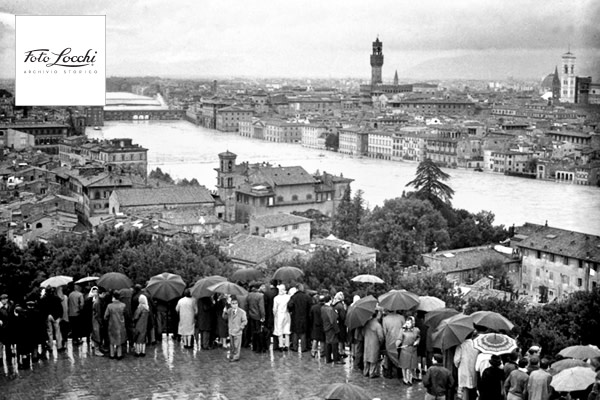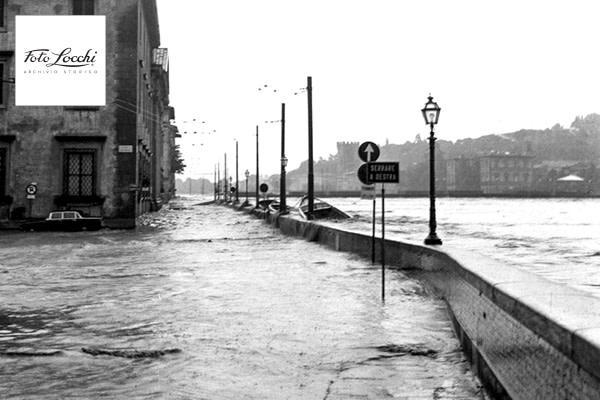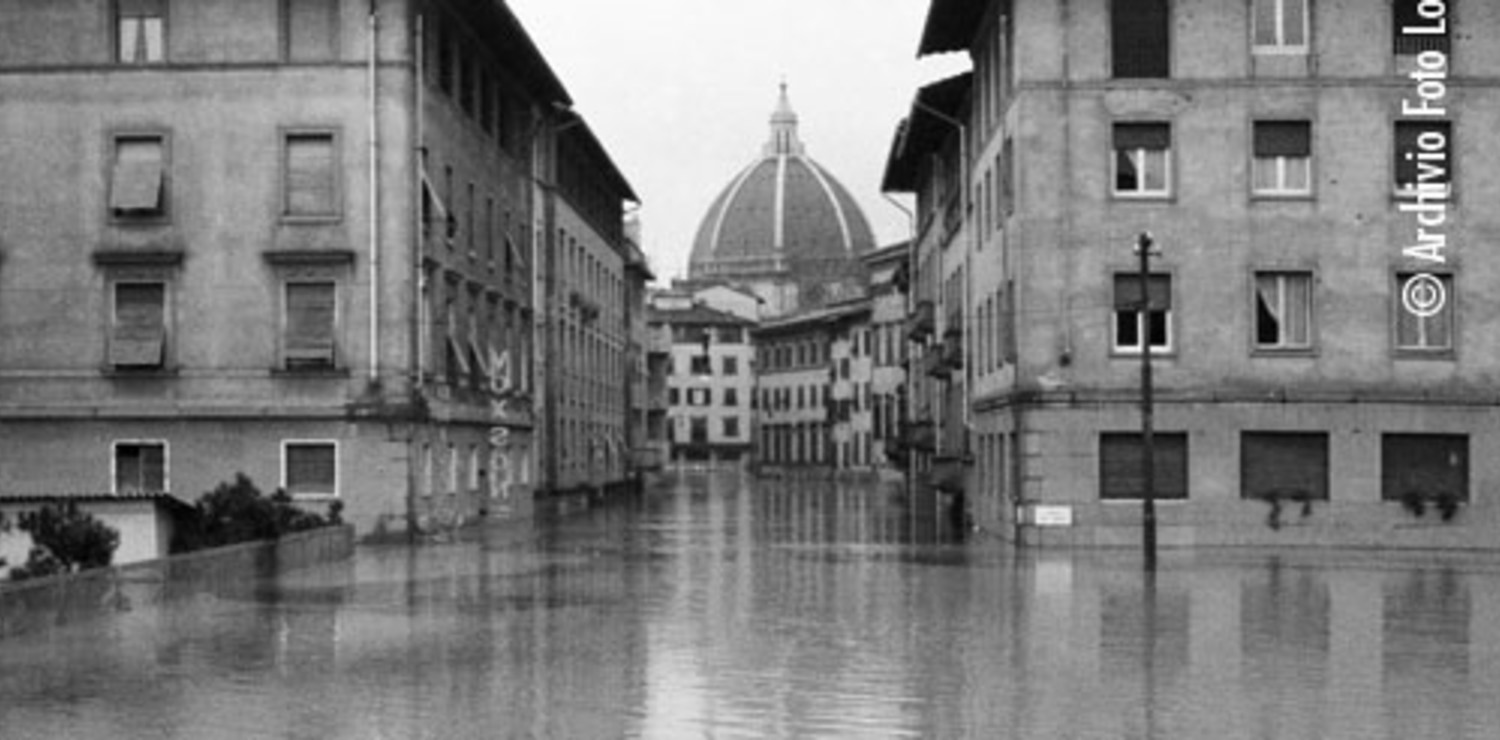4 November in Florence: everything you need to know about the Florence Flood
Our personal recollection of a tragic event that shaped the history and soul of a city
4 November 1966. A date that every Florentine will never forget. A gigantic overflow of the Arno river that caused the death of 35 people.
The silver of the Arno becoming a river of malodorous, sticky, intrusive, dark naphtha. Recounting those dramatic moments are the images from the Archivio Storico Foto Locchi, the largest photographic archive on the history of Florence.
 un pubblico di uno spettacolo terribile ph. credit archivio foto locchi
un pubblico di uno spettacolo terribile ph. credit archivio foto locchi The Ponte Vecchio suddenly suspended above an endless greyish lake - gone are its arches over the river. And the serpentine, insinuating movement of the non-stop water overtakes the embankments of the Lungarni and floods the streets - still empty before dawn, because 4 November is a holiday and there is no need to start running to work.
And the dark water continues its course and invades cellars, ground floors, the first floors of shops and palaces; it enters triumphantly into the corridors of the State Archives and the rooms of the National Library, it takes brutal possession of Santa Croce and continues determinedly up to the Baptistery and Santa Maria del Fiore where it arrives when it is almost 10 o'clock in the morning; Piazza della Signoria has not been saved.
The masterpieces that make Florence the cradle of the Renaissance, surviving the war and ready to hold on to the conquests of the economic boom, are in danger of melting away: it is dawn on 4 November 1966, the day before freezing rain has been pouring down heavy on the red roofs, and a nightmare begins for the city that will see the water reach almost five metres in height in some places.
In the meantime, the surrounding countryside and towns, first the Valdarno and then the lands as far as Pisa, were equally overwhelmed, and not only Tuscany fell victim to violent and inclement weather.
 l'incessante straripamento del fiume, su un lungarno irriconoscibile
l'incessante straripamento del fiume, su un lungarno irriconoscibileAnd just like the wonder of Cimabue's Crucifix, kept in Santa Croce, precious books and incomparable manuscripts, masterpieces of painting and jewels of ancient art, which have always been symbols of Florence, now appear lost.
Once again, it was the men who made the difference, the first arriving from nearby Prato and Versilia (with skates and dinghies), and then - called by the love for culture that the city had been guarding for centuries - the angels of the mud, young and very young, men and women with heavy jumpers, knee-length waterproof boots and the ardent and determined expression of those who know they are doing the right thing: saving a fragment of beauty to preserve for the future and for those who will come.









